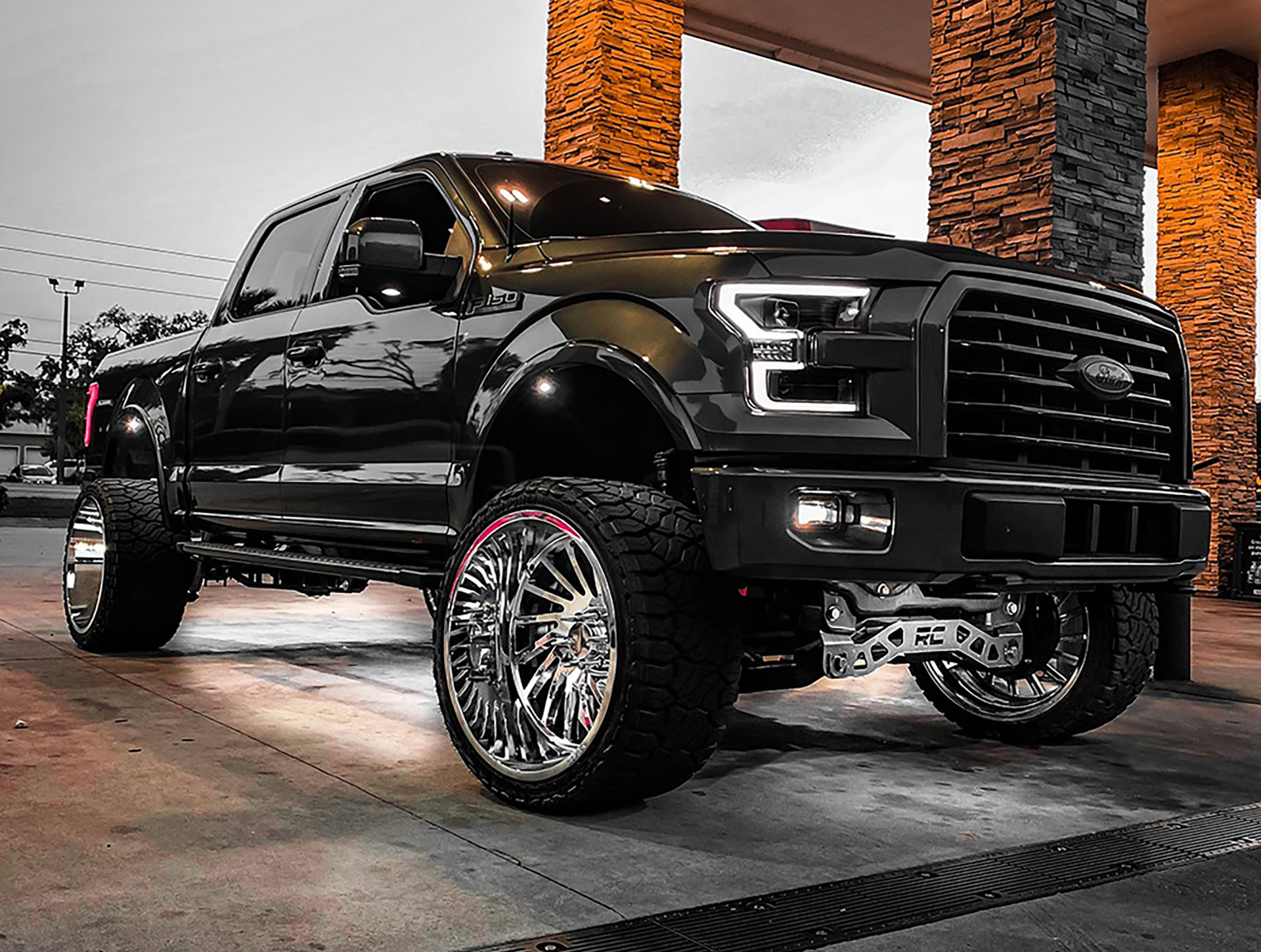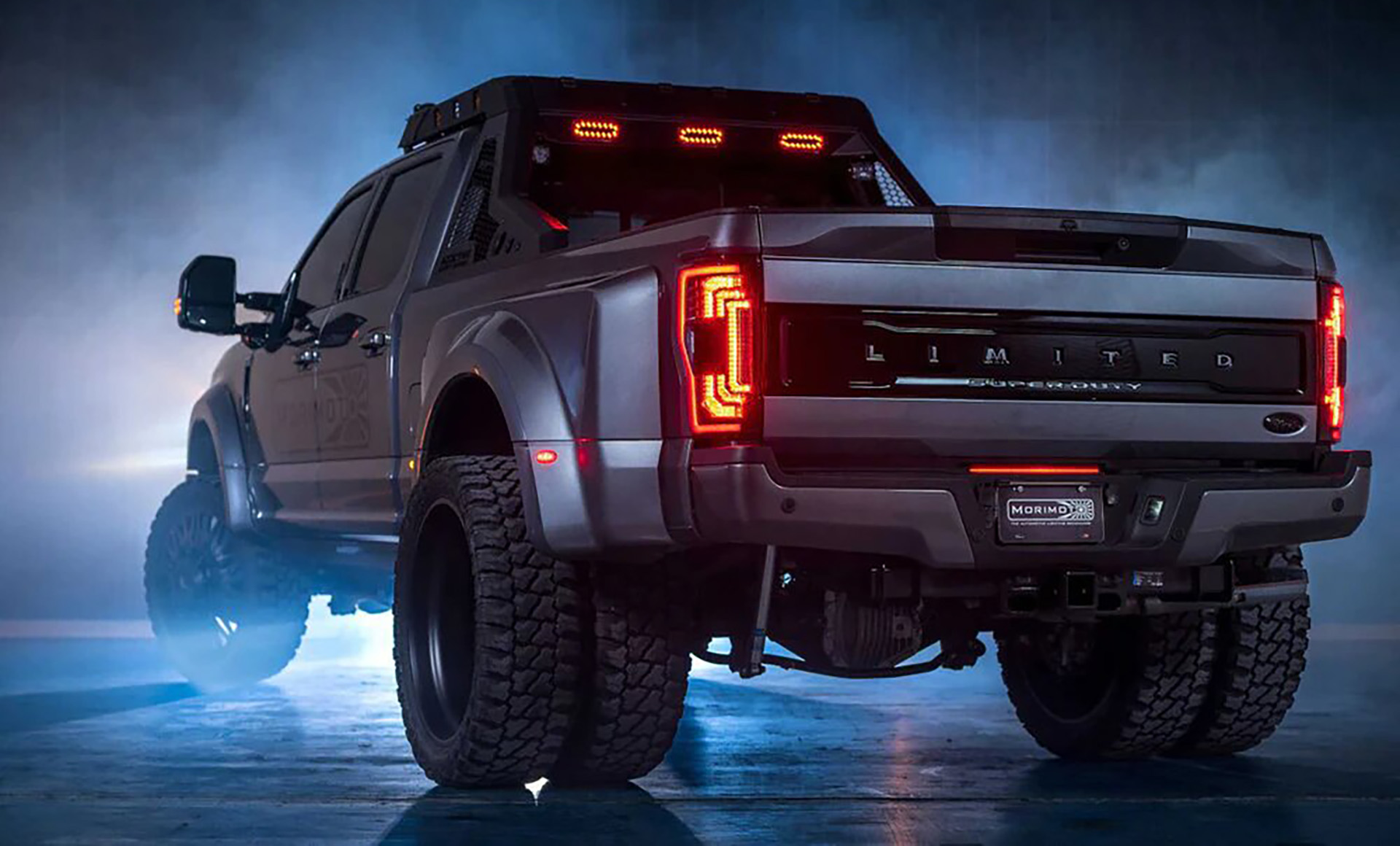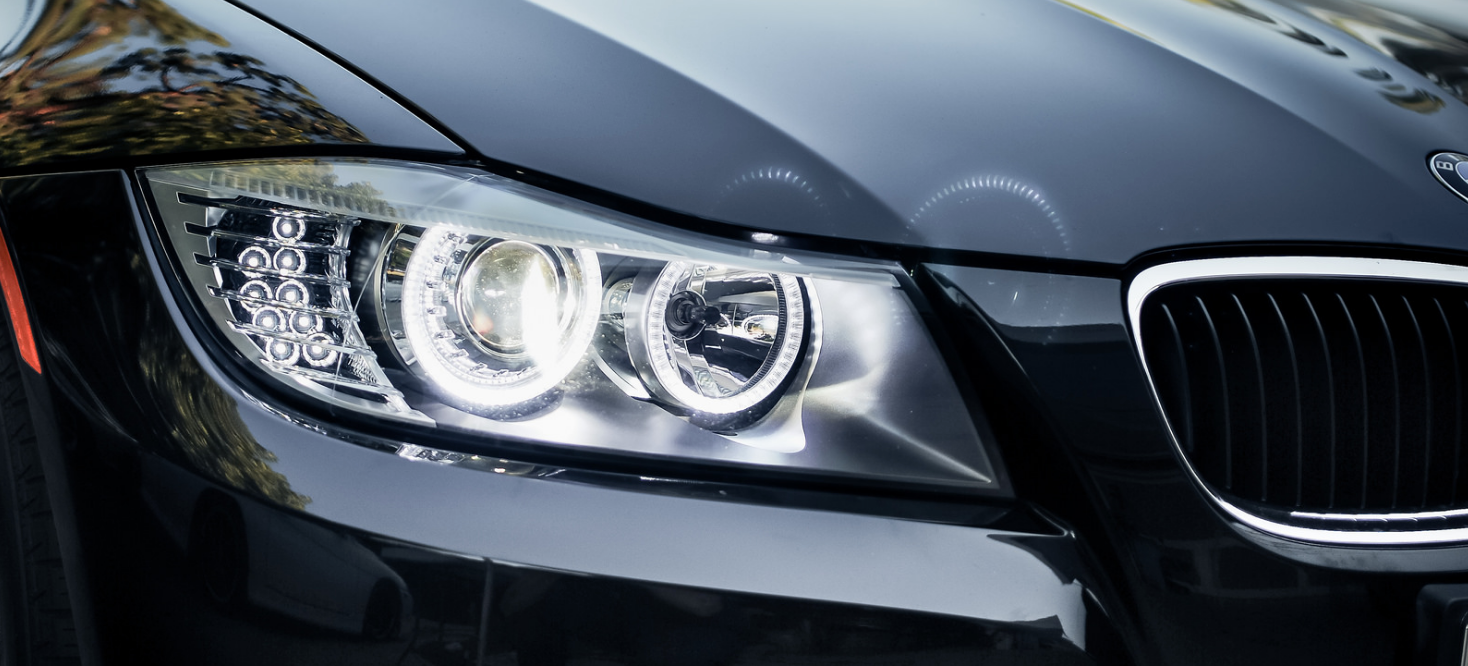Challenging weather conditions often force car owners to give up driving. If a vehicle is not equipped with quality lighting equipment, driving in heavy rain or fog can indeed be a dangerous activity, often resulting in severe physical and psychological injuries or even more serious outcomes.
But is it true that fog lights help avoid accidents in such weather conditions, and if not, do they make any difference?
What is a Fog Light?
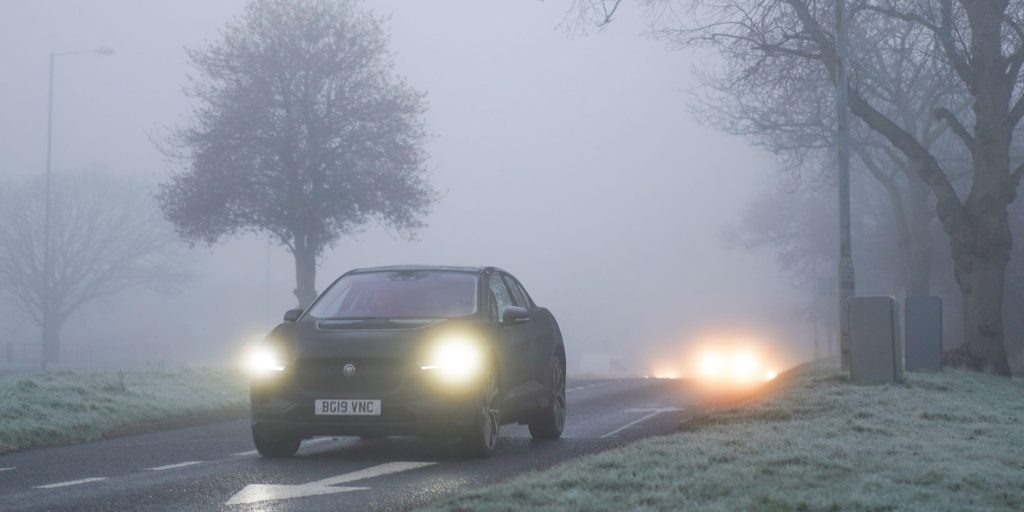
Front fog lights are small, usually round-shaped lights, located on the front of the car under the headlight assembly. They are designed to emit a wide beam of light directed at a specific angle, illuminating the road directly in front of the car, rather than a few feet above as conventional headlights do.
Fog lights are often mounted quite low (up to 30 inches above the sidewalk). The way they work is that they emit a wide band of illumination directed not forward to disperse fog, but down toward the road. It has a special “jumper” in its design that allows such work.
Simultaneously, the goal of developing a rear fog lamp is to create a red glow. In this, it is equivalent to stop light and is a guarantee that the rest drivers will see the car in wretched meteorological and weather situation. The rear fog light is installed in a reduced bumper segment or one of the reversing lights is supplemented with it.
Although fog lights are not common enough in the U.S., they are mandatory in European countries. However, compared to conventional headlights, they are considered only auxiliary lights, so they are most often not included in the basic and lower-level models, and may be offered by the dealer as an add-on.
How It Works
Fog, as you know, does not lie on the ground, it hovers above the surface, so the headlight is directed downward at such an angle as to illuminate the section of the roadway located directly in front of the car, preventing blinding other drivers.
Yellow light is most acceptable, while white light gives off glare against fog or rain, which can be blinding and dangerous. Yellow light, on the other hand, penetrates a dense veil of fog or rain, making the lighting soft to the eyes without blinding.
How Rear Fog Lights Work
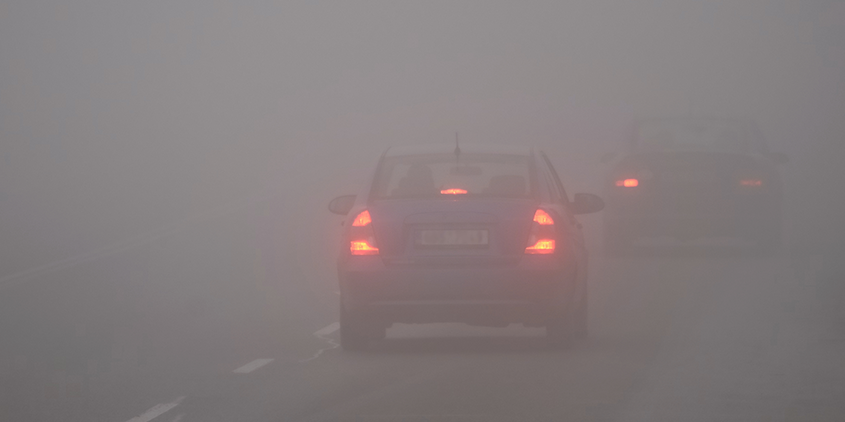
Front fog lights are designed to improve visibility in difficult weather conditions. While the rear fog lights of the car, allow other motorists to see the vehicle in front. Thus, they help calculate the distance between two cars and are an additional set of low-level lights.
There is often confusion between stoplights and rear fog lights. This is due to the fact that both devices produce the same intensity and color glow. In most countries, there are specific regulations regarding the use of rear fog lights so that there is no confusion.
When to Use Fog Lights
These are auxiliary lights that in most cases need to be switched on with the main headlights in low visibility conditions. They cannot replace normal headlights as they only illuminate a small section of the road in front of the car. When using fog lights without main headlights, it is dangerous to drive at high speeds and in some places it is forbidden to use them separately from the main lights.
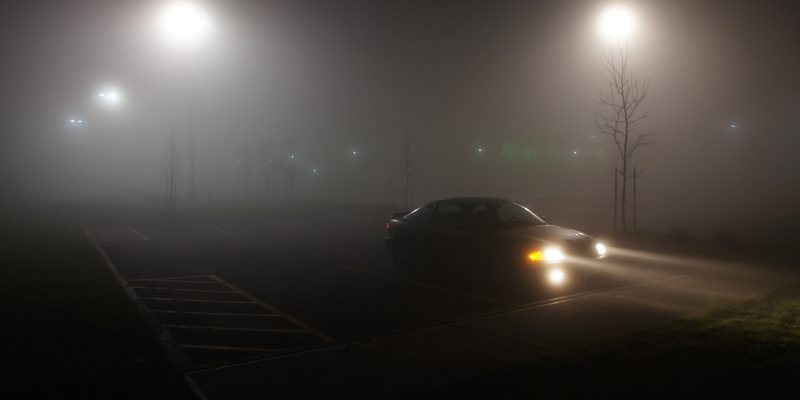
Although there are no rules for using fog lights, it is recommended that you only turn them on in certain situations, such as those listed below:
Fog
Fog is practically a large cloud, only lying on the ground. Fog lights, as their name implies, are designed to overcome sections of the road in heavy fog. Their low position allows them to illuminate the road directly below them while avoiding the light entering the fog, which would lead to light reflections, as occurs with headlights.
Rain
Also, fog lights can help during a heavy downpour. While high and low beam headlights can give glare by hitting raindrops, fog lights can help you improve your visibility on the road.
Sandstorms
Some states, especially Arizona and New Mexico, may experience sand or dust storms. Faced with such a frightening phenomenon, of course, it is not recommended to continue driving, but you will have to maneuver your vehicle anyway until you get to safety.
It is in these situations that you can benefit from fog lamps, which can help you navigate in poor visibility conditions. But it is important to remember that fog lights only illuminate the section of road directly in front of the car, and you should always use them in conjunction with the main headlights, and never instead of them.
Is it Legal to Use Fog Lamps If There is No Fog?
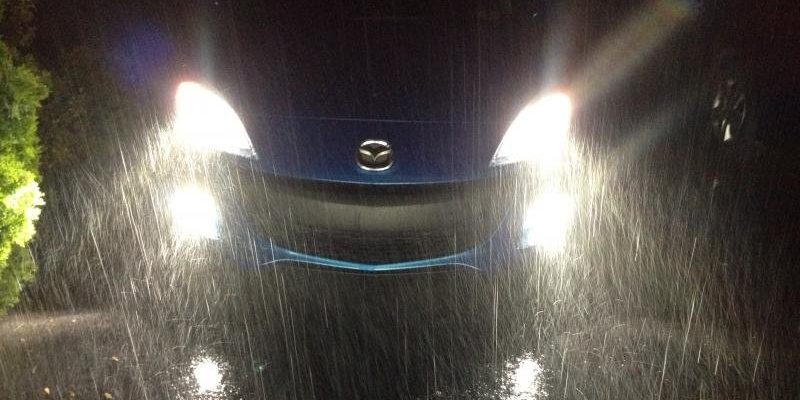
It is legal to use fog lights in low visibility conditions, even when there is no fog. This can happen if you are driving in a heavy downpour or a sandstorm. Keep in mind that traffic regulations regarding the use of fog lights may vary from state to state. For instance, Florida has a law that prohibits using fog lamps and other auxiliary lights when other vehicles are on the road when there is no fog.
Also, some states have a rule prohibiting the use of fog lights when there is less than 150 meters between vehicles. These measures prevent other drivers from being blinded by the glare. Therefore, to avoid violations and unforeseen incidents, it is best to check your state’s laws regarding the use of fog lights.
How to Switch on the Fog Lights
Fog lights have a special switch, usually a button with a half-circle symbol and three wavy lines. Simply press the button to turn them on. The fog light symbol may illuminate on the dashboard, depending on the vehicle model.
So, do You Need Fog Lights?
Each driver should determine for himself whether he needs fog lights. Their benefits are obvious in certain situations, but they are not convenient for everyone. Most experts argue that fog lights only complement the main ones, and there is not always a need for them in poor visibility conditions.
Despite the fact that fog lights are becoming less and less common on new models of cars, their presence still matters. In bad weather conditions, they improve visibility and can be crucial for drivers, especially when driving in unfamiliar terrain or at night.

